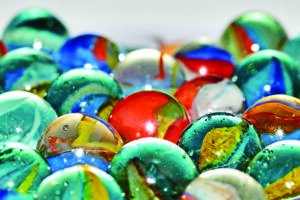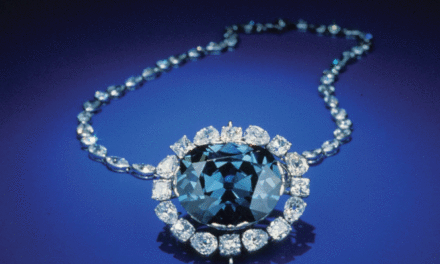(Editor’s note: DeeDee Wood is the owner of Black Cat Curiosities, an online antiques research and sales venue.)
Nostalgia fuels memories of games we played as children, and one of the most iconic toys that come to mind are marbles. Collected not only for gaming, the round spheres are also collected for fun, value and memories of the past.
Marbles have an ancient past. Found in almost every region in the world, including South America, Asia, Europe and more, some of the earliest excavation examples are in the Indus Valley region, modern day India and Afghanistan, producing small stone balls dating back from 2500 BCE. 
This form of game can also be found in ancient Rome, Mesopotamia and Egypt, where stone spheres and examples were found in digs from the past. Stone, clay and even walnuts have been found, indicating marbles have a deep history in our past.
During the medieval era in Europe, marbles had a place in the game centers of culture. Germany introduced the game from these ancient origins and trade routes in the 1500s, cementing the future of the game into society.
This area gave marbles their name, associated with marble being used in Germany to make the spheres, in some cases.
Manufactured in quarries of the area, they took on the form of real stone, being polished for game use.
In the mid 1800s, marbles began to be produced in Germany, being one of the first instances of glass manufactured marbles. Glass worker Johann Wilhelm also created “marble scissors” during this time, a way to cut off the glass with a blade to produce the round effect.
Marbles also had a history in past versions, since the dawn of time, as being ceramic, marble, and other stone materials.
German manufacturers are often given credit as being the first to really begin the process of modern manufacturing in the marble industry, with recognizable versions of mutli-colors and hand-spun glass, for which German manufacturers often received specialized patents for their unique creations.
Marbles and modern versions of the game had their height of success in the early 20th century, with mass-produced clay and glass marbles being made in Akron, Ohio by companies like M.F. Christensen and Sons, among other U.S. manufacturers in other cities, who produced over a million marbles a month during their early 20th century run.
Due to the tragedies and theater of war, Germany lost control as the major manufacturer of this toy in the 20th century, opening the door for U.S. companies to gain a footing in the popular toy industry. Akro Agate, a company based out of West Virginia, started producing industrial glass marbles in the early 1900s as well, cementing the new era of manufactured marbles as a viable toy.
These round spheres are part of a game, but they are also collected for worth and enjoyment.
The different types, colors, materials used and patterning are vast, and there are many guide books and opinions on what is worth the most, and why. Categories that contribute to these factors are size, type, age, style and rarity.
Damage to a marble, such as surface damage, can also affect a marble.
Names such as aggie, red devil and bumblebee describe marbles used in a game.
The versions of games, rules, creations of playing area and more have changed since early society versions, found in archeological digs.
The gaming industry still holds competitions worldwide, the most historic being the British and World Marble Championship, held in England, every year since 1932.
One of the most popular games, which many picture when mentioning marble games, is something called “ringer,” or ring taw, which is a marble game where players draw a ring and take turns flicking marbles of a larger size out of the ring.
Marbles and their vast variety, materials, shapes, sizes, economic attributes and ease of transport have helped shaped a nostalgic game as well as a collector’s dream.
Much research has to be done to determine worth, value and personal aesthetic choices from an object found around the world in archeological sites, showing marbles, in some form, are some of the oldest objects found in gaming in the world, still enjoyed by gamers, enthusiasts and collectors of antique objects around the world.




